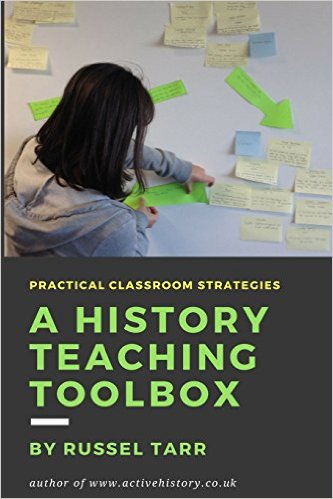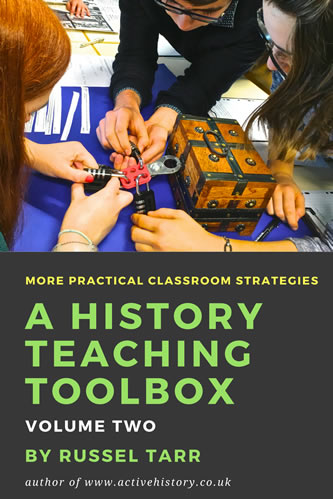This is a great way of encouraging students to conduct vigorous research in preparation for a debate about the success/failure of a particular ruler. It can be conducted either as a way of revising and consolidating topic knowledge at the end of a unit, or as an intensive means of studying the topic for the very…
Month: November 2015
What is your Roman name?
What is your Roman name? In this activity students will work out what their names would have been if they had been alive during the time of the Roman Empire! Students will be organised into pairs and will use a detailed table to choose the most appropriate three-part name for their partner. Part of the…
Creative writing task: the experience of Apartheid
Creative writing task: the experience of Apartheid Students are provided with THREE possible approache to this task, one of which is to “Produce a fictional first-person account written by a black South African looking back on their life under apartheid. The account should tell a story which allows you to illustrate the impact of the…
“Linkage Bingo” to summarise and connect key factors
This whole-class game is a great way firstly to summarise issues of cause or effect, and then (most importantly and most challengingly) to link them together in a meaningful way prior to students producing a written essay. The class will be divided into 5 teams and one piece of scrap paper to jot down ideas….
The Apartheid Laws: research, categorisation and prioritisation
The Apartheid Laws: research, categorisation and prioritisation | Completed teacher copy “1. Read the details about each Act and use these to complete the second column with the correct titles from this list: Population Registration Act | Bantu Self-Government / Authorities Acts | Group Areas Act | Bantu Education Act | Separate Amenities Act | Public Safety…
IB-style source work exercise: Why was apartheid introduced into South Africa in 1948?
IB-style source work exercise: Why was apartheid introduced into South Africa in 1948? A one-hour source work exercise in the style of the IBDP History Paper 1. Part of the complete scheme of work to support the IBDP History “Rights and Protest” unit on Apartheid South Africa.
Answer Buzzers for Revision Quizzes
A quick search for “Answer Buzzers” on Amazon will provide you with a link to something like this. They are a great way of adding a bit of fun to team revision quizzes with the teacher in the hotseat as the quizmaster! Taking it further In team quizzes, I usually nominate one person in…
South Africa – Discriminatory laws passed before 1948
Discriminatory laws passed before 1948 “Using any sources available to you, research the provisions of each of the following TEN laws passed before 1948.When you have notes on each, colour code the laws using a scheme of your choice and provide a key to make it clear how you have categorised them” Part of the…
Target Diagrams for Categorisation
The ClassTools Target Diagram Generator is a fantastic way of getting students to break down a key question. Three factors are placed in the centre of the diagram. In the next layer, each factor can then be broken into two examples. In the final layer, each of these examples can then be substantiated with factual detail…
South Africa before 1948 – factual test
Factual Test | Teacher Answer Sheet This 20 question, paper-based test is provided in the form of a ‘fill the gaps’ exercise. When completed and corrected, it forms a useful revision aid in itself. Part of the complete scheme of work to support the IBDP History “Rights and Protest” unit on Apartheid South Africa.
“On School Report!” – A fun way of evaluating factors and individuals
When assessing the successes and failures of a particular historical figure, consider approaching the task in the form of a “school report”. This can be the basis of a consolidation exercise at the start of the topic, or an intensive and efficient way of covering fresh material step-by-step. Start by identifying the main ‘subjects’ that…
Empathy exercise: Understanding the Broderbund and the ANC
Empathy exercise: Understanding the Broderbund and the ANC Supporting material: 1944 ANC Youth League Manifesto | 1948 National Party Platform “In 1912 the Afrikaner Broderbund was established to protect the rights of White Boers. In 1918 the ANC was established to protect the rights of Black South Africans. Produce a press statement from each organisation dated 1944 which…
Diamond Diagrams for Prioritisation
Overview: Students produce or are given 9 pieces of information which they arrange in order in a diamond diagram. Examples: Arrange outcomes of the Treaty of Versailles from most successful to least successful; Arrange medieval jobs from highest status to lowest status; arrange historical figures from most significant to least significant. Taking it further: Students…

